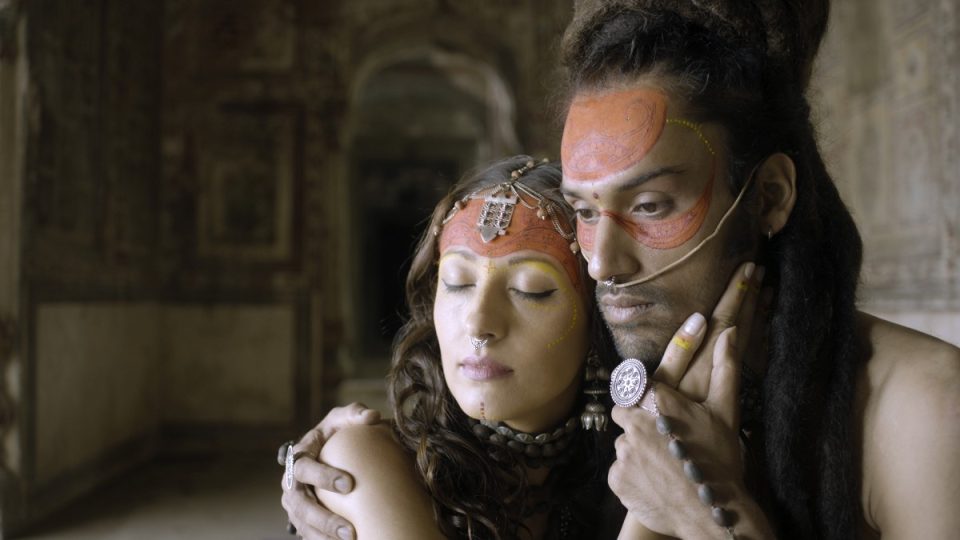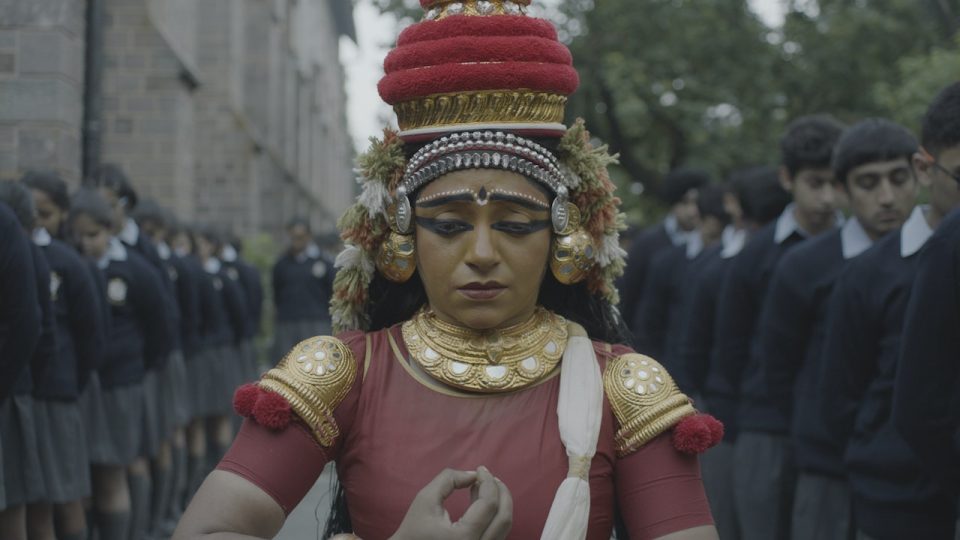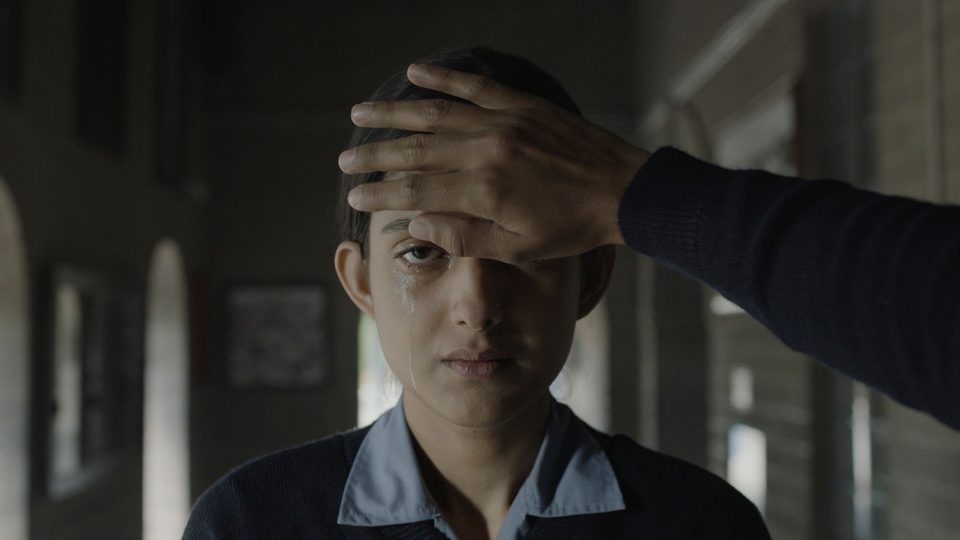
Meghdoot review: A love fable that transcends barriers of time and age
Debutant filmmaker Rahat Mahajan’s Meghdoot (The Cloud Messenger) is unprecedented in its engagement of three ancient storytelling traditions: Kutiyattam, Kathakali, and Theyyam

Debutant filmmaker Rahat Mahajan’s Meghdoot (The Cloud Messenger) was the only Indian film in competition at this year’s International Film Festival Rotterdam for its top honour: the Tiger Award. It is also part of the ‘Love’ strand at the ongoing BFI London Film Festival. Mahajan has co-edited the film with Bina Paul, who was the artistic director of International Film Festival of Kerala (IFFK). The connection with Kerala doesn’t end there. Mahajan’s film is unprecedented in its engagement of three ancient storytelling practices of the land — Kutiyattam, Kathakali, and Theyyam — which attribute other-worldly qualities to their respective characters who enact through these visually expressive art forms.
Theyyam and Kathakali have been previously used in Jayaraj’s Kaliyattam (1997) and Shaji N. Karun’s Vanaprastham (1999), respectively. Believed to be the gateways to enter the world of gods, these dance rituals, along with the theatrical form Kutiyattam, invoke epic characters from Indian mythology, who fluidly traverse the mortal and immortal worlds. But in both Malayalam films, the traditional performing arts of Kerala serve only as professional embellishments of the male protagonists, devoid of any mystical overtones. Unlike these films, Meghdoot leverages its ritualistic dancers to tap into the millennium-old repertoire of myths and create a fable that abandons the spatio-temporal structure of the cosmos perceived by us and alternates between multiple realms.
Also read: Vikram Vedha: Saif, Hrithik film a grander, slicker version of Tamil original
Folklore and fiction meet reality
The film opens with a Kutiyattam artist (Kapila Venu) narrating the ancient fictitious tale of Jaivardhana (the director himself) and Tarini (Lalita Shivani), who are yakshas (celestial spirits) and eternal lovers from the Sun dynasty. But the brother of Lord Kuber, King Dashananan (Kathakali artist Rajeevan Peesapali), covets Tarini and unleashes his wrath on Jaivardhana by cursing him to become a mortal. After centuries of longing and prolonged suffering, the two lovers reincarnate as Jaivardhan Singh (‘JV,’ Ritvik Tyagi) and Tarini Sethi (Ahalya Shetty), who meet in the modern world as teenage students of a colonial-era boarding school. Unbeknownst to them, they find themselves drawn to each other and eventually become lovers in this life, too. But as fate would have it, they are again separated because of Dashananan, and it is now up to JV to bring Tarini back from the land of death.

Alluding to Kalidasa’s eponymous poem, Meghdoot merely draws inspiration from the ancient Sanskrit text and sets off on a tangent, much like Mani Kaul’s Aashad Ka Ek Din (1971). The film also evokes the legendary poet and playwright’s “Ritusamhara,” as the transient visual tonality complements the rasa (mood) transition of the text. Mahajan exercises creative liberty in sourcing specific passages from the Ramayana and giving them a spin to interweave the contemporary narrative with mythological storytelling. Lord Hanuman (Kathakali artist Sadanand Bhasi) serves as the bridge through which JV can reach the netherworld and bring Tarini back from the clutches of death. The film blends folklore, fiction, and reality so seamlessly that the demarcating lines between them get blurrier as the screenplay progresses. There are Aghori sadhus in the afterworld; then there’s the Theyyam (KN Lakshmanan), who invokes the spirit of Tarini from beyond the grave.
With so much packed into the narrative, the runtime of around 150 minutes seems a bit limited. In a conversation, the filmmaker admits to hesitantly paring down his 180-minute edit, conforming to the market trends. Mahajan started out in Bollywood as an assistant director to Vishal Bhardwaj and subsequently spearheaded Visual Promotions for several acclaimed feature films, including Kaminey (2009), Ishqiya (2010), and Udaan (2010). To hone his filmmaking skills further, Mahajan enrolled for an M.F.A. at the ArtCenter College of Design, Los Angeles, in 2012.
His short film, Istifa, was a national finalist in the narrative category of the 41st Student Academy Awards in 2014. After returning to India, he worked with fellow Pahari filmmaker, Amit Dutta, who helped refine his aesthetic and filmmaking sensibilities even further.
Also read: Ponniyin Selvan review: Gripping first half, rushed second, more to come

The overarching theme of Meghdoot finds resonance in most scriptures and religions of the world. Suffering as a means to enlightenment/liberation/ultimate truth is an age-old notion that becomes the pivot for the two protagonists. The excruciating punishment that JV endures daily at school and the ordeal of Tarini prove to be preparatory stages for the “final test,” as the entire universe works towards breaking the ancient curse and setting the two lovers free. Although Dashananan is portrayed as a demonic character for most parts, Mahajan also humanises him as a lovelorn tragic figure who is desperate for Tarini’s curse to end and be freed of his misery. This non-judgmental and empathetic perspective certainly lends more depth to the narrative and enhances the viewers’ engagement with the material.
Aesthetic quotient
Meghdoot relies heavily on aesthetics to hook the viewers and draw them into its magical world. The exquisite grand costumes of the mythical characters, their multi-layered colourful makeup, and enchanting facial expressions are spotlighted by close-ups, slow tracking shots, and fragmentary compositions. Mahajan’s alma mater, The Lawrence School, Sanawar, forms the Victorian Gothic backdrop, which owing to its location in the misty Himalayan mountains, accentuates the supernatural occurrences depicted in the film. The intercutting between the present-day reality and the ancient lore never feels unnatural, as the mythical dancers oscillate between the two worlds, negating the contrast in the production designs.
Surprisingly, despite being juxtaposed with highly trained performing artists of the Indian aesthetic traditions, the school kids manage to hold their own and don’t come across as amateur actors. Ritvik Tyagi, as the main protagonist JV, steals the show with his nuanced and understated performance. While as an insubordinate and mischievous student, he succeeds in evoking laughs with his straight-face humour, Tyagi also exhibits tremendous maturity for his age in crucial scenes where he extracts his emotional range to significant effect.
With Meghdoot, Mahajan breaks free from the cliché of intense love portrayed only by adults in popular culture. Through the coming-of-age story of JV and Tarini Sethi, the filmmaker shows us that as long as it is pure and selfless, love is such a potent and life-altering emotion that it can transcend all barriers, including age, time, and space.
Arun AK is an independent writer on cinema and literature. He tweets at @arunusual.


